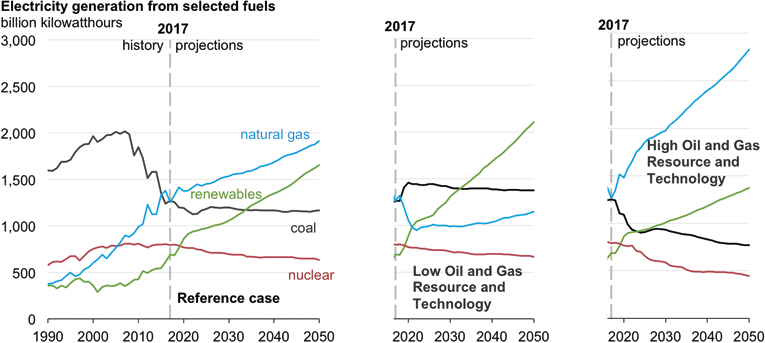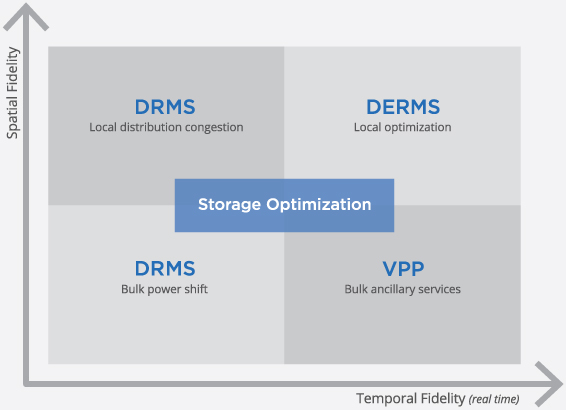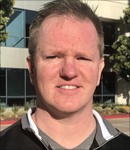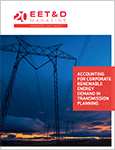It used to be simpler to balance loads and resources. Back in the heyday of centralized generation and one-way flows, you drew from the available stack of generating resources to plan for forecasted demand and to meet real-time loads.
Not anymore.
As older, less-efficient fossil-fuel and nuclear units retire, low natural gas prices and favorable costs for renewables are making them the prime sources of new generating capacity. Renewables generation will double between 2017 and 2050, the Energy Information Administration projects. Meanwhile, customers are adding behind-the-meter resources such as solar and storage. And myriad of software-enabled systems is allowing two-way power flows, turning consumers into producers. Global distributed energy resource (DER) capacity is projected to grow from 132.4 GW in 2017 to 528.4 GW in 2026, according to a marketing research company specializing in the energy industry.
The changes are pushing the need for more flexible resources on the electrical grid. As the California Energy Commission noted in its December 2016 report on resource flexibility: “Maintaining the reliability of the electricity system while integrating larger amounts of variable wind and solar generation requires more flexible resources to balance supply and demand.”
While grid designers build transmission and distribution systems to handle the changing nature of loads, the injection of variable renewable generating resources into the grid creates new challenges for utilities and system operators. In response, utilities are deploying a variety of operational and technical solutions to help manage the influx of intermittent and distributed energy resources. The solutions include improved weather forecasting, flexible generation, storage, intra- and inter-regional load balancing and faster scheduling and dispatch. Additionally, the growth of smart-grid enabled devices such as networked thermostats, water heaters, HVAC systems, electric vehicles, stationary batteries and industrial loads provides utilities with numerous opportunities to control demand while maintaining power quality.
All this added flexibility is great. But utilities need to manage this flexibility somehow. This is where the concept of flexibility management comes into play.

Electricity Generation From Selected Fuels
Generation from natural gas has already bypassed coal and nuclear and renewables are not far behind.
(Source: U.S. Energy Information Administration, Annual Energy Outlook 2018.)
Flexibility Management: A New Source of Operational Extensibility
Resources that can ramp down during off-peak hours and ramp up during on-peak hours provide operational flexibility. These include flexible hydro, natural gas-fired combined-cycle and combustion turbine units and large, centralized battery storage. But perhaps the most interesting and important new source of operational flexibility comes from utilizing data and the software systems that do something meaningful with this data. This concept is being called the energy internet by some in the industry.
Hosting both energy and data flows, the energy internet opens up data from millions of interconnected DERs and sensors, which new software applications then harness to deliver flexibility to energy providers. These software solutions allow utilities to balance supply and demand in a real-time, granular fashion, in order to maximize the value of the new distributed, dynamic and digital energy network and to meet their environmental mandates. This delicate balancing act is a requirement for greater deployment of renewable generation, both large scale and behind the meter, in order to consider these resources as firm assets, which the utility can count upon when needed.
The introduction of software into the business of load balancing is undisputed as the future of energy distribution. The problem facing grid operators, however, is how to choose from among an array of potential options. Many of the options are point solutions, dealing with a limited number of use cases, asset types or customer categories.
A Universal Platform for DER Integration
The truth is, nobody knows which hardware or software technologies will succeed and which ones will fizzle out. But point solutions make utilities bet on which technologies will win in the future. Universally adaptable software platforms, on the other hand, take an open approach, meaning that on top of being able to predict, optimize and control all types of DER assets in real time and at scale, they also allow for a constant evolution of their hardware network.
This means that the utility or utility’s customer can buy one type of solar panel today, switch providers next year and not have to worry about the compatibility of its orchestration system. Same with batteries and all other types of Internet of Things devices that end up grid connected. Regardless of the technology of the day, a universally open platform allows for the ultimate amount of flexibility. Additionally, as one type of hardware is added for one software customer, those integrations become available to all, creating a network effect that benefits all customers.

DER Integration
Flexibility management software applications allow utilities to integrate DERs across a range of times and locations.
With flexibility management software, utilities can manage and optimize the following resources in real time, across the entire connected energy network:
- All distributed energy resources and assets
- All programs
- All customer types
- Millions of participants
- Millions of assets
- Billions of data points
In a world where both supply and demand are unpredictable and potentially out of the utility’s control, the key to balance is harnessing data to flex with the subsequent ebb and flow of energy. Flexibility management software leverages artificial intelligence and big data to balance supply and demand in real time, increase the productivity of every energy asset and deliver new energy services and value to customers.
Balancing Across Time and Space
Balancing loads and resources requires decisions to be made across the dimensions of time and space. Utilities and grid operators must simultaneously work at the macro and micro levels when it comes to the spatial dimension—from 500-kilovolt transmission lines down to neighborhood distribution feeders. And they must work in a variety of time increments, from seasonal, to day-ahead, on down to hours, minutes, seconds and real-time dispatch decisions.
A flexibility management platform allows utilities to integrate DERs across spatial and temporal ranges.
As illustrated in the graphic on DER integration, an integrated flexibility management application can treat flexibility use cases and asset categories in all four quadrants of a time-location graph:
- Bulk power shift (bottom left quadrant). At the bulk-power-system level, a emand response management system (DRMS) would enable the aggregation of DERs at scale for services such as load shifting and peak shaving. This DRMS application would enable utilities to increase the amount of generation that can be connected to the system without deteriorating the grid’s performance.
- Bulk ancillary services (lower right quadrant). Traditionally, operators use regulating generation to “chase the ACE,” or Area Control Error, which is the instantaneous difference between the scheduled and actual interchange. But a fleet of real-time DERs could do the same thing. To resolve immediate balancing needs, an ideal virtual power plant (VPP) application would aggregate myriad DERs into a virtual flexible resource that could be controlled and monetized in energy markets in real-time to provide ancillary services such as frequency regulation, contingency and operating reserves and other ramping services. This would extract maximum value from assets, create new revenue streams and increase flexible capacity.
- Local distribution congestion (top left quadrant). In a local, less time-constrained scenario, the ideal DRMS would deliver comprehensive, dispatch-grade demand-response management down to the level of a single distribution feeder. This application would provide bankable load shed forecasts, increase customer participation rates and improve program yield, taking into account potential future asset and program requirement changes more traditional DERMS.
- Local optimization (top right quadrant). A DERMS application would provide the broadest solution to connect and manage any type of DER, from any vendor. Utilities could do surgical dispatch, at a micro-grid level, on distribution equipment and provide ancillary services such as volt/VAR optimization.
- Behind-the-meter (BTM) optimization (center). DER flexibility management platforms also offer optimization of BTM assets. Today, more customers own battery assets that help them reduce demand charges or provide backup power. But these usages leave unexploited value on t he table. Using an energy storage management system (ESMS) application, utilities could partner with their customers by purchasing access to their storage assets. The utility would aggregate customer DERs to shift system peaks, perform frequency regulation, acquire reserve response, or increase hosting capacity as a distribution resource. In turn, customers would acquire an extra revenue stream from the sale of capacity into wholesale markets.
Managing Flexibility to Integrate Renewables and DERs
As variable renewable energy increases its penetration of the grid, utilities need greater flexibility to balance loads and resources. Traditional baseload generation facilities, with their relatively slow ramp rates, high minimum generation limits and long, costly startup and shutdown processes, lack sufficient reliability at a needed level of cost in order to provide the required flexibility.
More efficient and operationally flexible distributed and renewable energy resources, combined with a flexibility management software platform to manage them, offer utilities the opportunity to design a reliable and lower-cost supply network to meet modern system, regulatory and market needs. With greater flexibility, planners and operators can integrate greater levels of variable renewables and DERs while meeting their mission of providing reliable energy in a cost-effective manner, deepening their relationships with customers as they provide greater value.
 Shane O’Quinn is the senior director for strategic accounts at AutoGrid Systems. Prior to AutoGrid, O’Quinn was vice president of business development for Enbala Power Networks and spent 14 years at Ventyx (now part of ABB). Before entering the energy sector, he worked in management consulting and software firms including Ernst & Young.
Shane O’Quinn is the senior director for strategic accounts at AutoGrid Systems. Prior to AutoGrid, O’Quinn was vice president of business development for Enbala Power Networks and spent 14 years at Ventyx (now part of ABB). Before entering the energy sector, he worked in management consulting and software firms including Ernst & Young.








